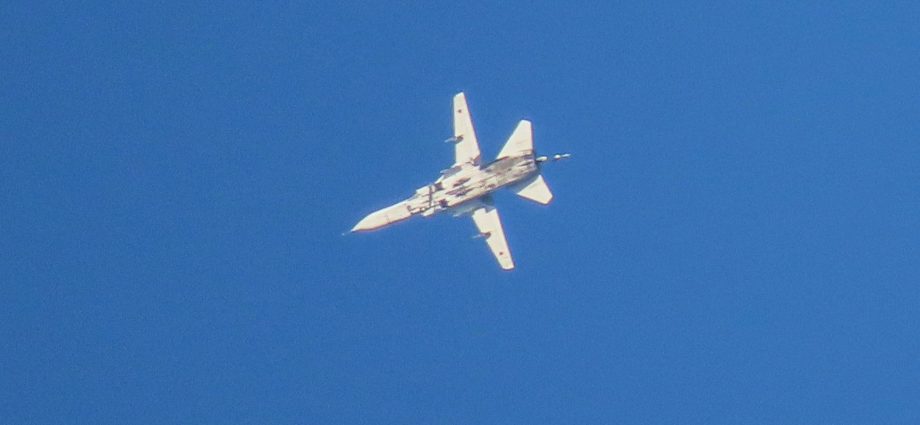
A recent spike in aggressive behavior by the Russian military over Syria, coupled with the downing of an American drone by a Russian fighter jet in the Black Sea, is prompting fears that Moscow and Washington are on a collision course to confrontation.
While scuffles and standoffs between Russia and the United States in northeastern Syria are not new, developments this month have sparked concern among analysts that a more serious skirmish is possible. De-escalation is urgently needed to prevent the situation from spiraling out of control.
American and Russian militaries have operated in an uneasy co-existence in Syria since the Kremlin sent forces there in 2015 to support the Syrian government.
US troops were deployed to northeastern Syria in 2014 to counter the Islamic State (ISIS) terrorist group in cooperation with the Kurdish-led Syrian Democratic Forces. About 900 US military members remain to keep a potential resurgence of ISIS at bay.
Notably, the US and Russia established communication channels in 2015 to prevent direct military encounters. But since March 1 this year, US forces have reported a surge in “unprofessional” behavior by Russia’s air force in Syria.
Russian aircraft are acting aggressively toward US bases in a manner not typical of an organized military force, commanders have said. For instance, armed Russian jets reportedly flew sorties over American bases in the country nearly every day last month, violating the deconfliction agreement between the two countries.
Lieutenant-General Alexus Grynkewich, the top US Air Force general in the Middle East, said Russia’s aggressive posture in Syria is linked to the return of Russian commanders after failing in Ukraine.
“To me, it’s very, very concerning,” he said. “I believe that some of those Russian leaders are trying to rebuild their reputation.”
The erratic behavior, previously a nuisance, became a major concern for the Pentagon after a Russian Su-27 fighter jet damaged a US Reaper drone west of Crimea, causing it to crash into international waters.
In a statement, the US military’s European Command criticized the pilot’s “unsafe and unprofessional” interception, and said the Russian fighter dumped fuel and flew recklessly in front of the drone before striking its propeller.
For its part, the Russian Defense Ministry denied the allegations and claimed that an increase in US drone flights off the coast of Crimea is “provocative in nature.”
Crimea is a Ukrainian peninsula that Russia annexed in 2014 after the US-backed overthrow of the pro-Russian regime in Kiev and now uses as a major military base for its war on Ukraine. As such, the drone incident highlights the dangers of miscalculation and the threat of escalation between Russia and the North Atlantic Treaty Organization – particularly as the West continues to increase its military support to Kiev.
But although the drone incident was serious, the situation in Syria presents greater risks. According to US officials, Russian forces in Syria are no longer informing them about their movements, violating protocols that require the air force that flies into areas controlled by the other party to announce operations in advance.
Hence when unannounced Russian aircraft enter what the US regards as its airspace, American warplanes intercept them. US officials argue that they are obliged to monitor Russian aircraft movements in their airspace closely to ensure the safety of their forces on the ground, and to prevent potential mishaps.
The US recently increased its military presence in the Middle East in response to the heightened Russian aggression in Syria. In addition to deploying a squadron of A-10 attack aircraft ahead of schedule, a carrier strike group was ordered to remain in the region to support US forces. Through these actions, the US is signaling that it will take all necessary measures to defend its forces in Syria and the wider region.
These developments are even more concerning amid the absence of clear procedures to prevent what happened in the Black Sea from occurring in Syria. If such an event were to unfold, the US would likely interpret it as deliberate, which could lead to a further escalation of tensions in the region.
Unfortunately, recent developments indicate that such a scenario is no longer a remote possibility. In times of crisis, even the slightest misunderstanding can lead to miscalculations and grave mistakes. While wise people are needed to prevent catastrophic outcomes, this approach is not foolproof.
With the risk of escalation in Syria climbing, there’s an urgent need for clear deconfliction protocols between US and Russian forces. A military hotline is only useful if both sides pick up the phone. To avert disaster in Syria, Washington and Moscow must work to prevent confrontation – and move quickly to contain the fallout if it occurs again.
This article was provided by Syndication Bureau, which holds copyright.

